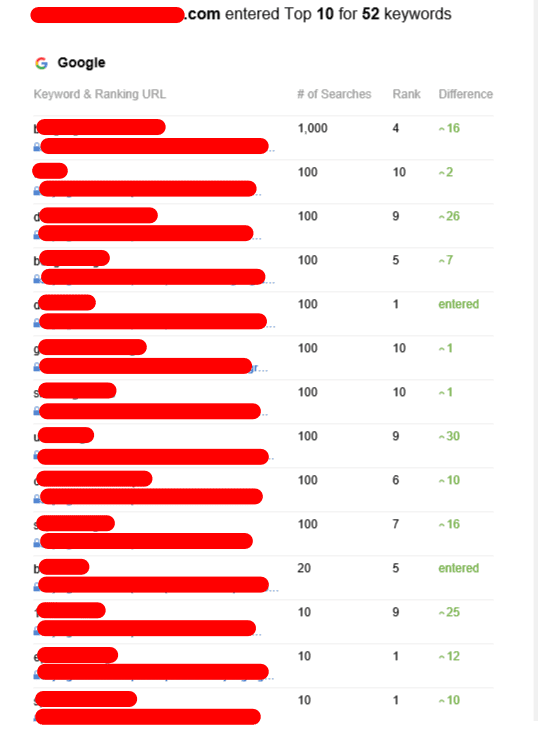Tiered Link Building - The Dangers of Black Hat Link Building
It is possible to increase your search engine rankings using a tier system of link building. However, it is important to remember that it can be risky using black-hat link building methods. Over the years, search engines like Google have cracked down on these practices through a series of updates.
Avoid black-hat methods such as PBNs and blog comments. These techniques are wasteful and could result in penalties from Google.
First-tier links
This method of link building involves placing links on websites that have an excellent domain authority (DA) and a lot of monthly traffic. It is a fantastic way to make your site visible by search engines. However, it is not the best solution for every situation. Although it could temporarily improve your rankings, you should remain focused on the quality and quantity of your backlinks.
The goal of first-tier backlinks to build your profile by adding handful of natural-looking, high-quality backlinks. This will help you rank for keywords that are relevant to your niche. It will also help your website gain more credibility which is essential for getting the most traffic from search results.
While some black hats endorse it, it's an extremely risky strategy. It's not in line with Google Webmaster Guidelines and, if a human reviewer discovers this the link, they may take manual action which could have a major impact on your rankings.
To prevent this from happening, you should try to make your first-tier links look as natural as is possible. They should be relevant to the article they're embedded in, and not obvious or overly-spy. It's also a good idea to confirm whether the directory to which you are posting your first-tier links is registered with Google. You can check this by entering the URL of the directory into a search engine like Google and observing the number of results that appear.
Second-tier links
Tiered link building is a great way to boost the power of your PBN However, it also comes with a risk. Google is snatching at hyperlinks that look fake and low-quality links that tiered linking builds on gets less effective as time goes by. This type of link building could result in penalties for your website and even lower your ranking.
It is essential to avoid being penalized by using white-hat techniques when creating your second-tier link. You can make use of high-quality content on websites that are relevant to your industry. These hyperlinks will be more trustworthy than forums and comments, and are more likely to be clicked on by users. You can also submit your articles to directories that are relevant. Another option is to sign up with HARO which is an email subscription service that sends you daily emails on topics reporters are seeking to cover.
Second-tier links do not just increase the authority of your PBN however they can also boost the quality and quantity of your primary backlinks. Second-tier links that are built on sites with high domain authority will increase the authority of primary backlinks. To maximize the benefits from this method it's best to employ a mix of standalone second-tier links as well as second-tier links that are used in conjunction with primary links.
Third-tier links
Tiered link building is a well-known method for increasing the authority of websites. It can be used to boost traffic, increase rankings, and increase revenue. This method involves the creation of an internet chain that gradually improves in terms of quality. It also assists in bypassing spam filters.
However the process of tier link building can be risky if the process is not done in a proper manner. Google could penalize your website in the event that you make use of excessively many links that are low quality. Google's Webmaster Guidelines do not allow for tiered linking.
Tier 1 links are of the highest quality. They should be anchored to the keywords you're targeting and should be relevant to the content of your site. This will assist you in ranking for your targeted keyword which will bring an increase in traffic to your site.

Tier 2 links are a bit less important. These links usually go to directories, blogs, and Q&A websites. Tier 3 links tend to be slightly more shady however they can add value to your link profile. They include links in forums, comment sections and bio profiles. In general, people who are involved in tiered link building tend to ignore relevance, quality and context at this stage. They employ automated tools to build third-tier hyperlinks and link them to pages that have low authority.
Fourth-tier links
Tiered link building is a successful strategy that can improve the ranking of a site's organically. It is only effective when combined with other white-hat SEO strategies. Google may penalize your site when you do not adhere to these guidelines. The reason is because tiered links are often associated with low-quality content which Google views as an attempt to manipulate its algorithm for ranking.
Tiered links are often linked to low-quality blogs and websites. This means that they will lose their value as search engines start to deem them as spammy and unimportant. These links are also found on low-quality profiles on social media, web 2.0 platforms and other websites that feature user-generated content. These backlinks are typically of low quality and can be generated by automated tools.
In addition to these disadvantages that tiered link building can result in an over-exaggerated and inflated profile of backlinks, which can negatively impact a website's SEO. tiered backlinks is because it's difficult to distinguish between quality and low-quality backlinks. Furthermore, it can be expensive for businesses to maintain a huge number of backlinks. Therefore, it's best to use tiered link building along with an extensive content marketing strategy. This will ensure your content is relevant to your audience and is more likely to draw traffic to your website.
